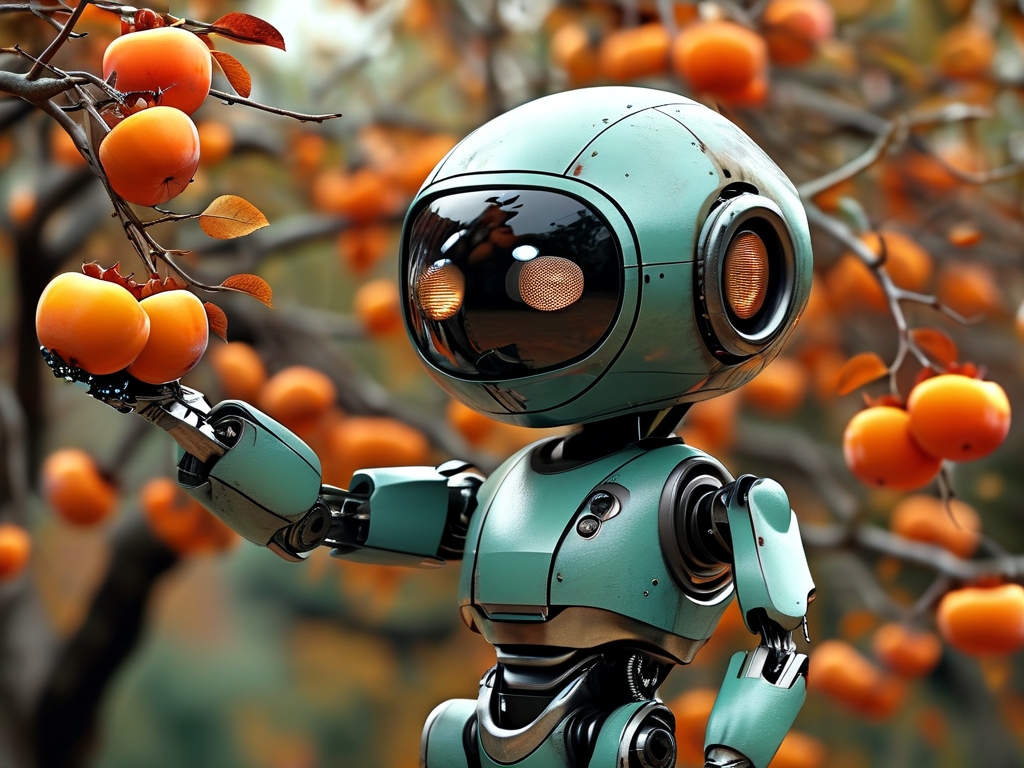The agricultural sector is witnessing a transformative shift with the integration of robotics, particularly in niche areas like persimmon harvesting. Traditional methods of picking this delicate fruit have long relied on manual labor, which is time-consuming, physically demanding, and increasingly costly due to labor shortages. Robotic persimmon picking technology now emerges as a groundbreaking solution, combining advanced vision systems, precision mechanics, and artificial intelligence to redefine efficiency in orchards.

The Challenges of Manual Persimmon Harvesting
Persimmons, known for their soft texture and thin skin, require careful handling to avoid bruising. Human pickers must assess each fruit's ripeness, twist it gently from the stem, and place it into containers without stacking-a process that demands skill and patience. Seasonal labor shortages, particularly in aging agricultural communities like Japan and South Korea, have exacerbated the problem. Farmers face rising costs and delayed harvests, leading to potential economic losses and food waste.
How Robotic Systems Work
Modern robotic harvesters integrate multiple technologies to mimic human dexterity. High-resolution cameras and spectral imaging sensors scan trees to identify ripe persimmons based on color, size, and texture. Machine learning algorithms, trained on thousands of images, improve accuracy in distinguishing ripe fruits from unripe ones or leaves. Once a target is identified, a robotic arm equipped with a soft gripper-often using silicone or pneumatic systems-approaches the fruit. Tactile sensors measure pressure to prevent crushing, while a rotating wrist mechanism replicates the human "twist-and-pull" motion. Some models even employ suction cups to stabilize the fruit during detachment.
Advantages Over Traditional Methods
Robotic pickers operate 24/7, unaffected by weather or fatigue, significantly accelerating harvest timelines. Trials in Japan's Nagano Prefecture demonstrated a 300% increase in daily yield compared to human workers. Precision handling also reduces fruit damage rates from 15% (manual picking) to under 3%, enhancing market value. Additionally, these systems collect real-time data on fruit quality and tree health, enabling farmers to optimize irrigation and pest control.
Technical and Economic Hurdles
Despite progress, challenges remain. Persimmon trees vary in structure, with branches often obstructing robotic arms. Engineers are developing adaptive algorithms that map 3D tree geometries to navigate such complexities. Cost is another barrier: a single robotic unit currently exceeds $50,000, making it inaccessible for small-scale farmers. However, startups like Agrist and Tevel Aerobotics are experimenting with rental models and shared harvesting networks to improve affordability.
Global Applications and Future Outlook
While Japan leads in testing persimmon-specific robots, the technology has implications for other fragile crops like strawberries or peaches. In Spain, researchers are adapting similar systems for citrus groves, while California-based startups focus on table grapes. Looking ahead, swarm robotics-where multiple small robots collaborate-could revolutionize large orchards. Combined with drone-based monitoring, this approach may enable fully autonomous farms within a decade.
Ethical and Social Considerations
The rise of agricultural robots sparks debates about rural employment. While some fear job displacement, advocates argue that automation fills critical labor gaps and allows workers to shift to higher-value roles in tech maintenance or data analysis. Governments are urged to create retraining programs to ease this transition.
In , robotic persimmon picking exemplifies how targeted automation can address pressing agricultural challenges. By blending cutting-edge engineering with ecological awareness, this technology paves the way for sustainable, efficient food production in an era of climate uncertainty and demographic change.



